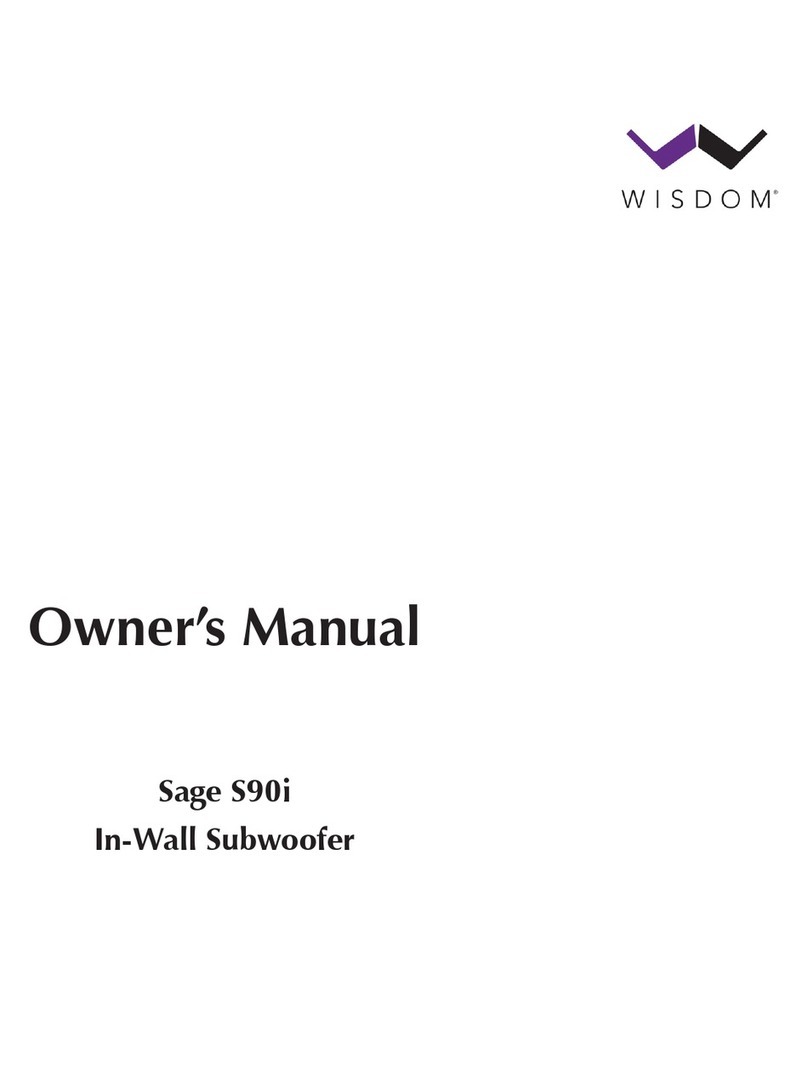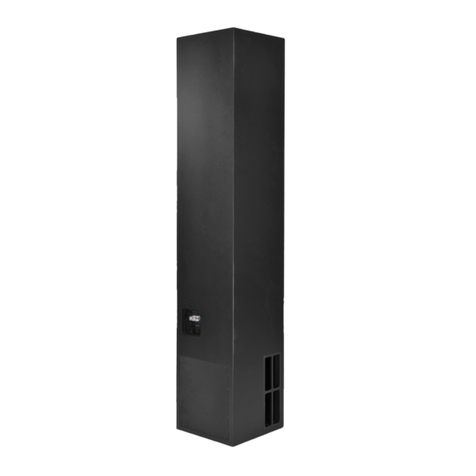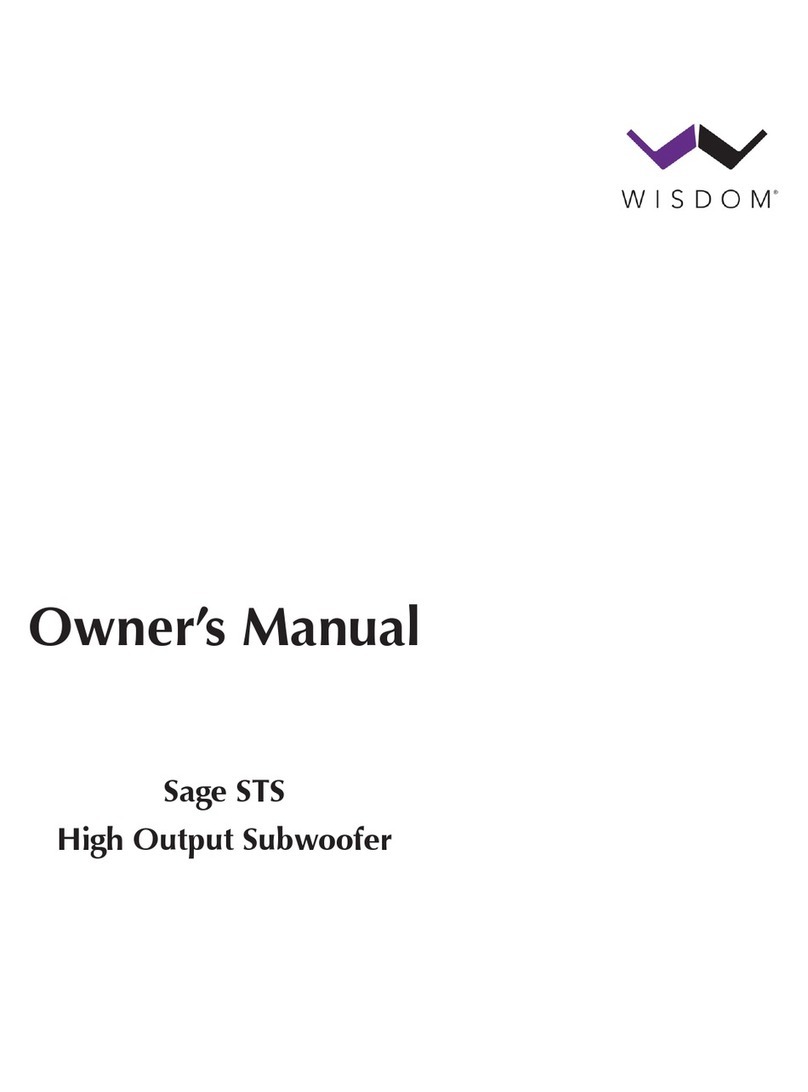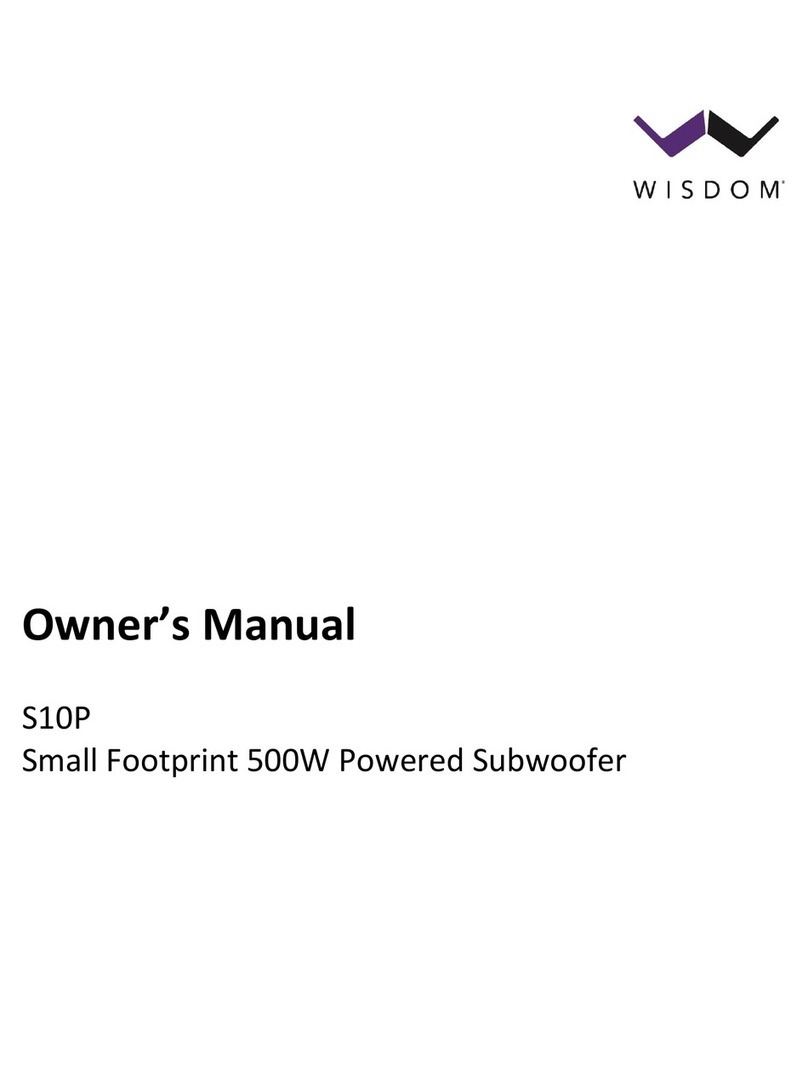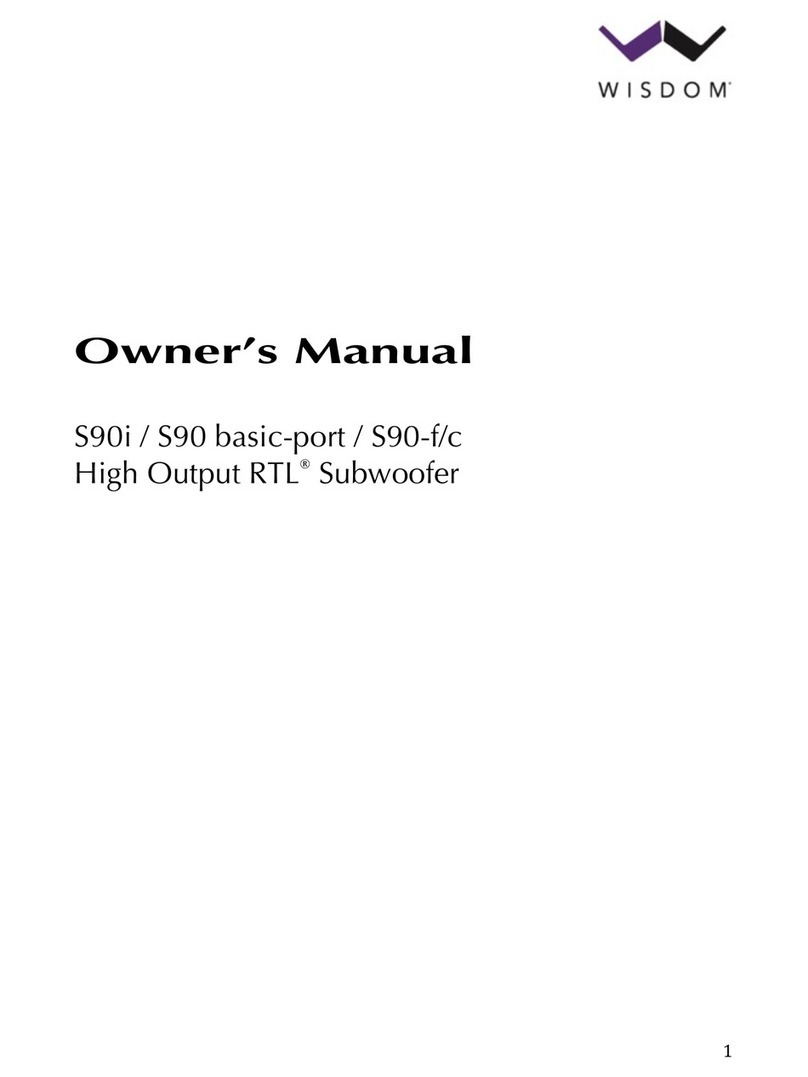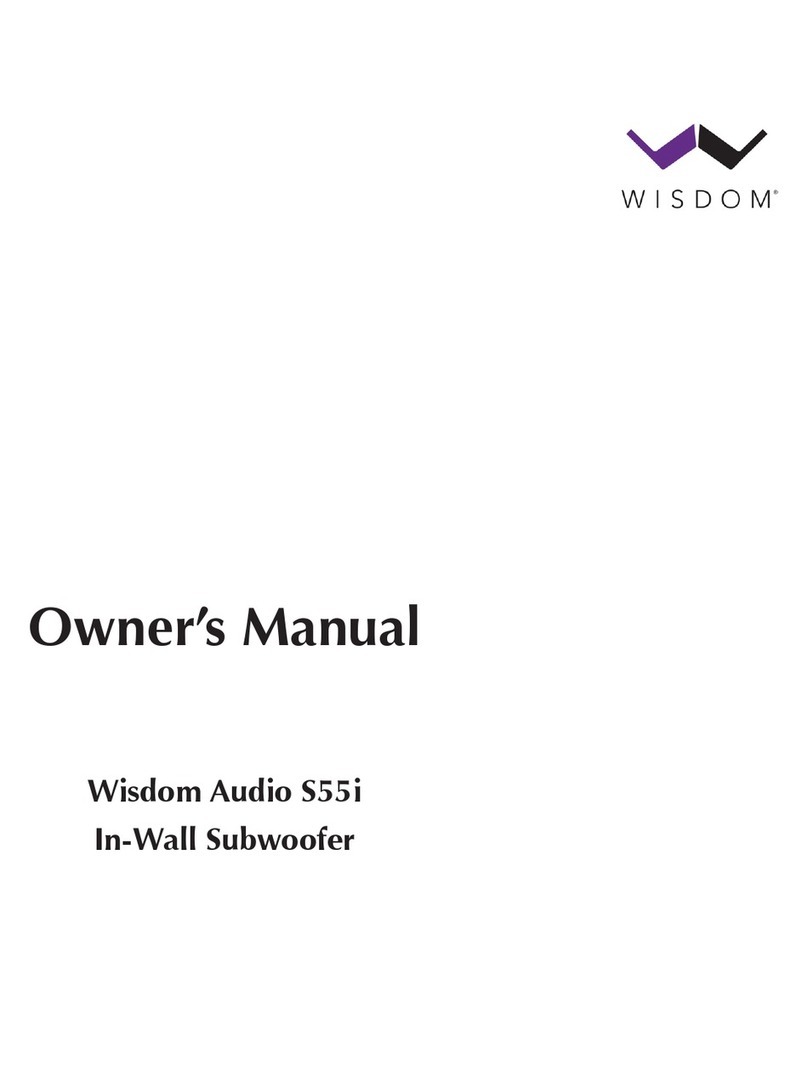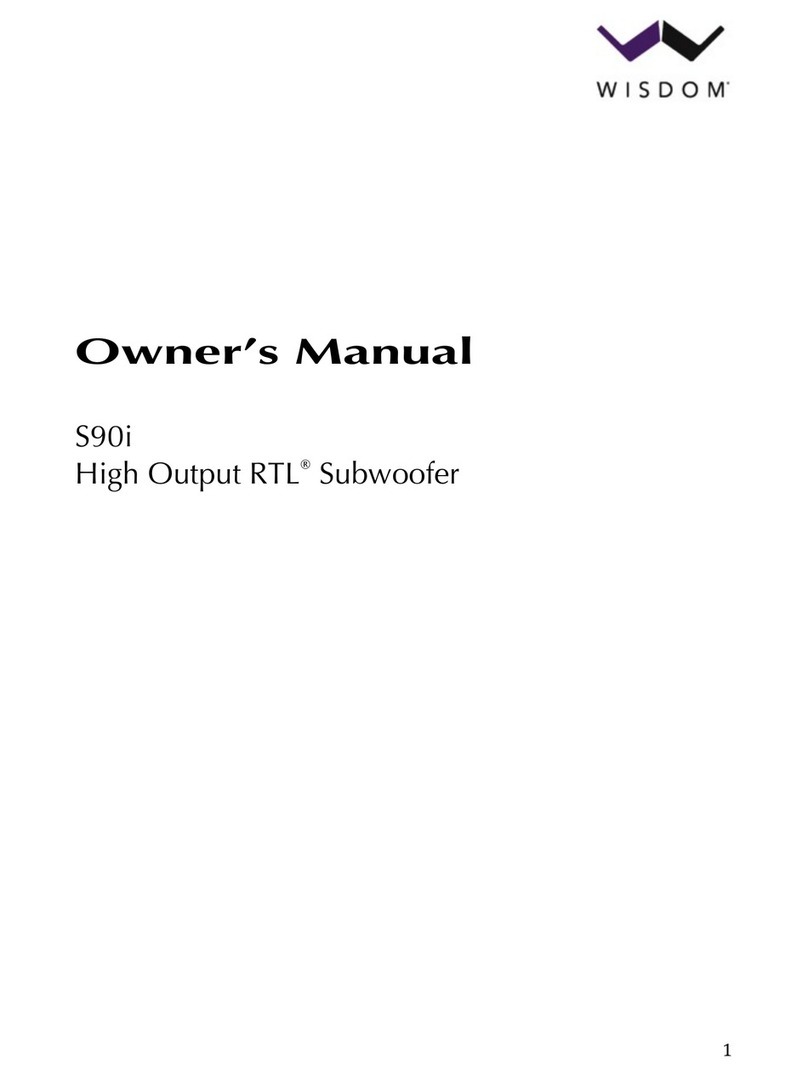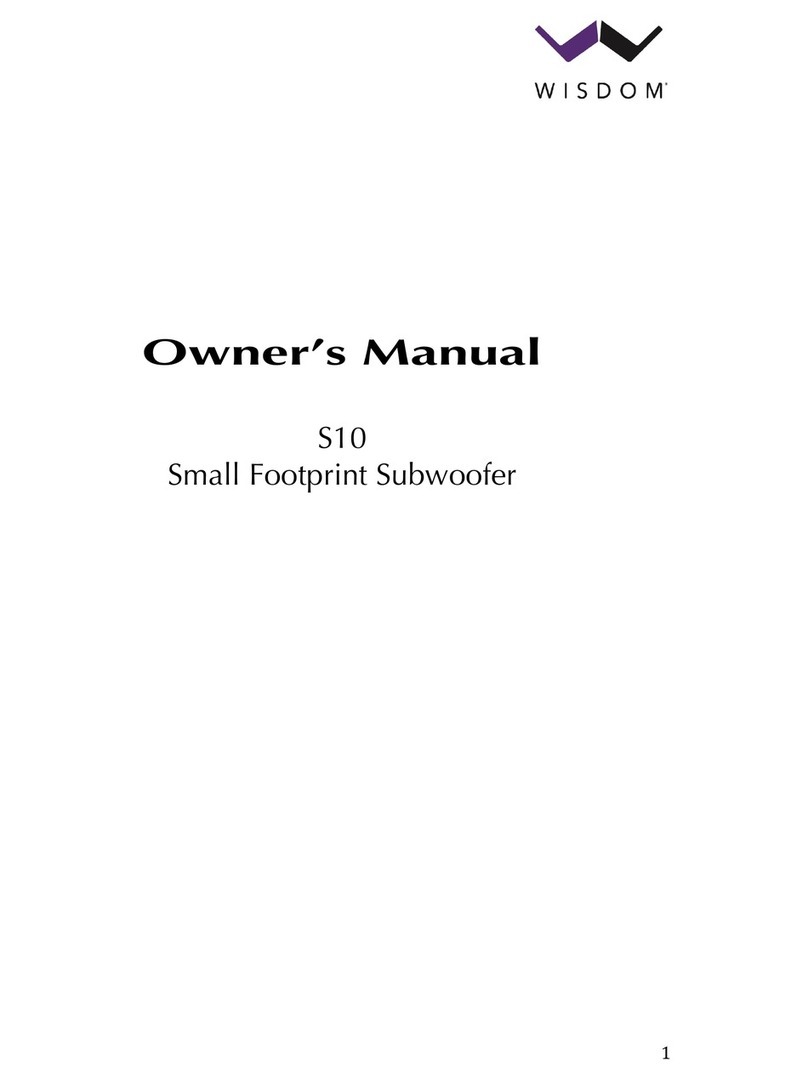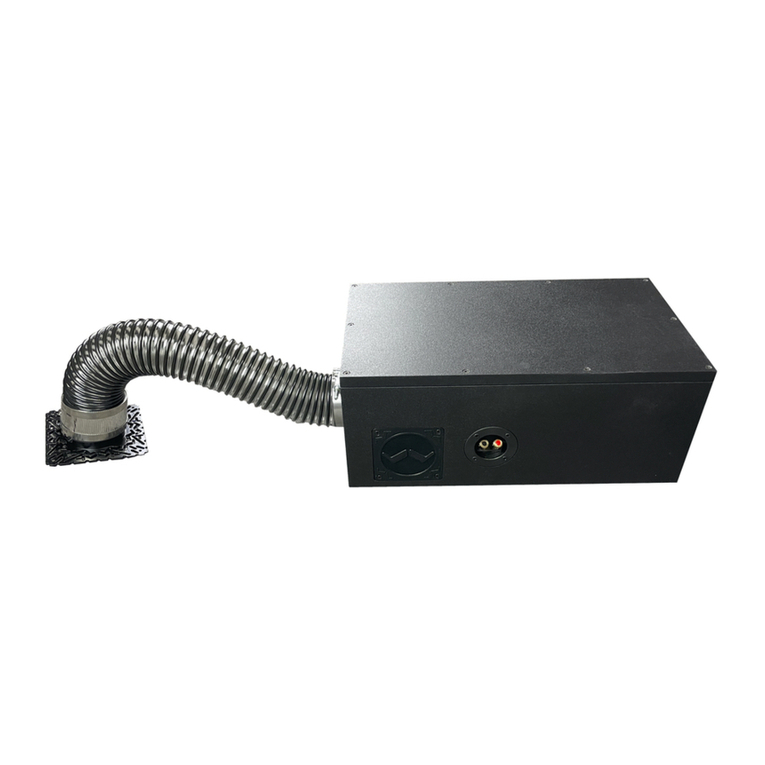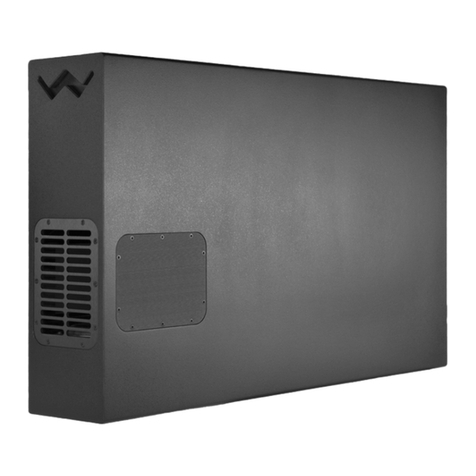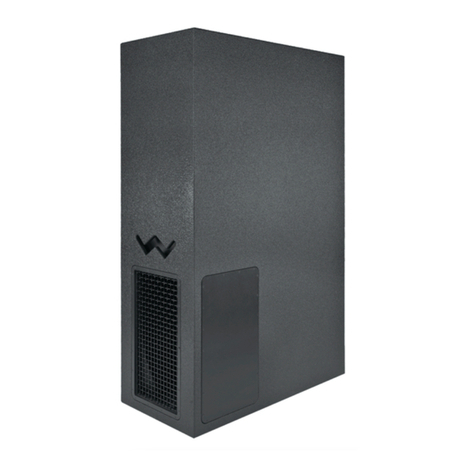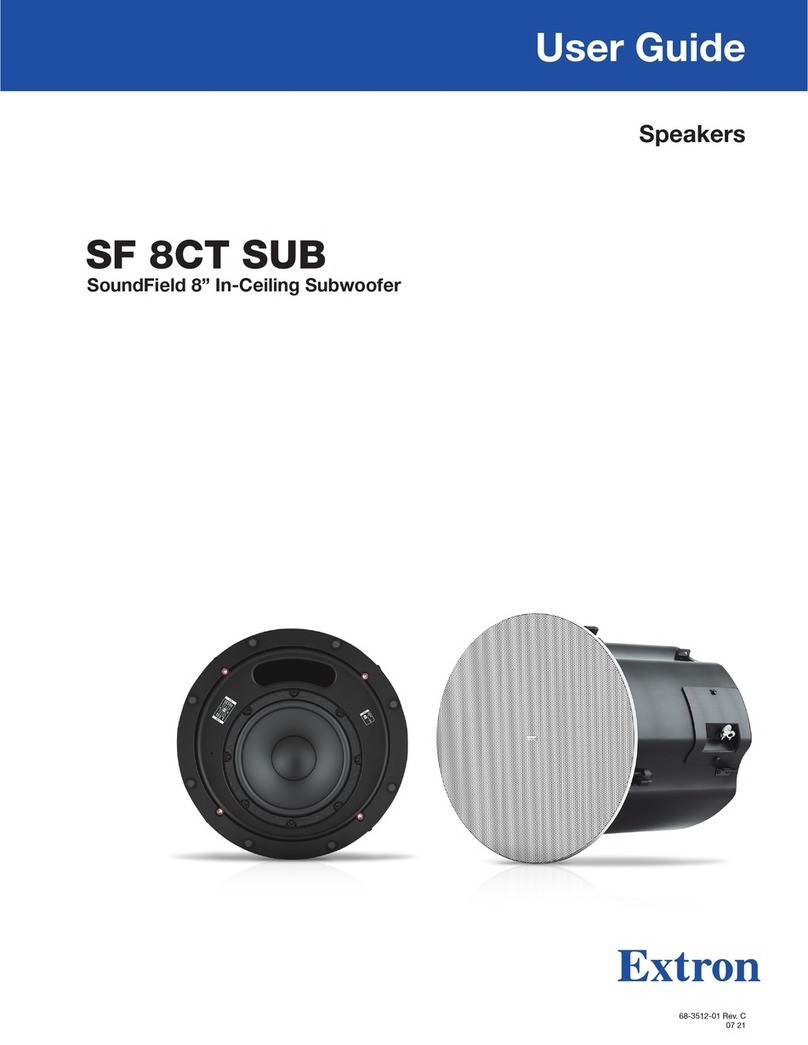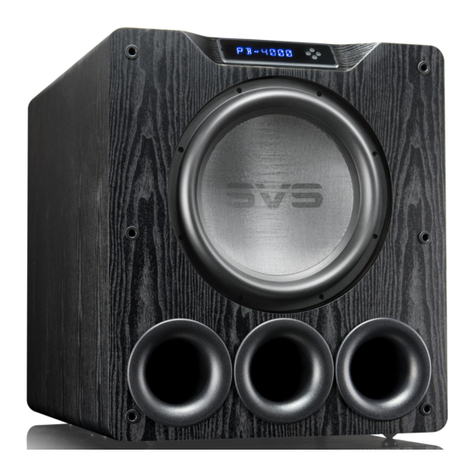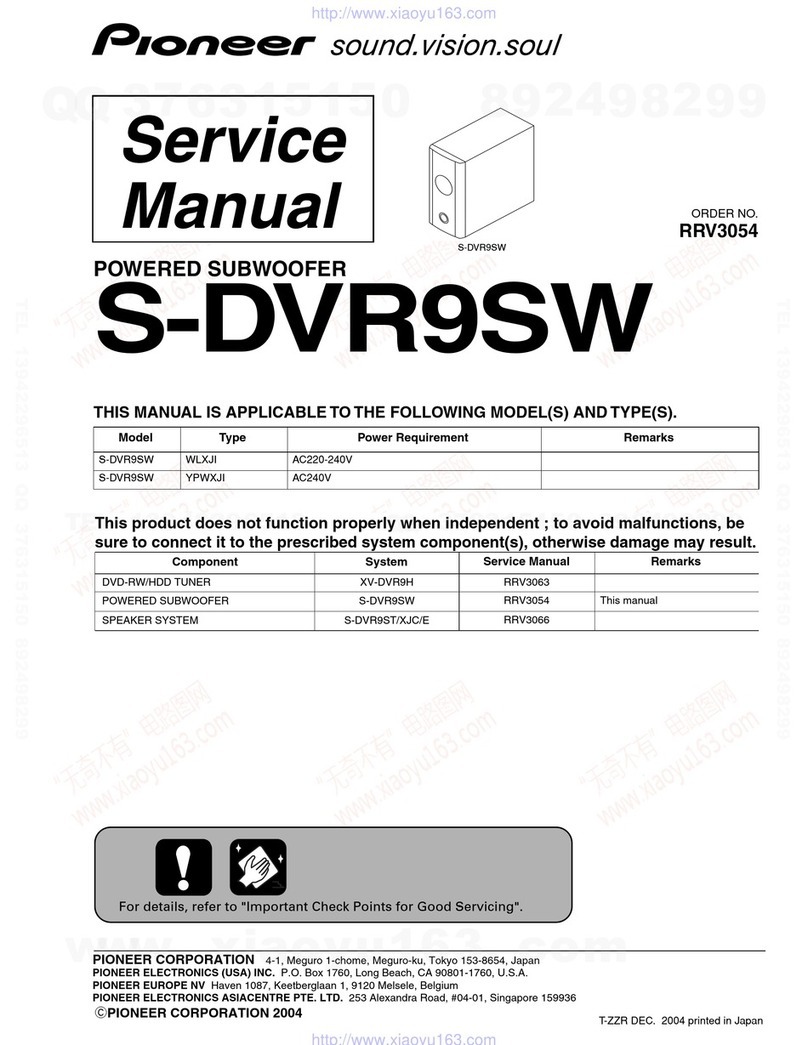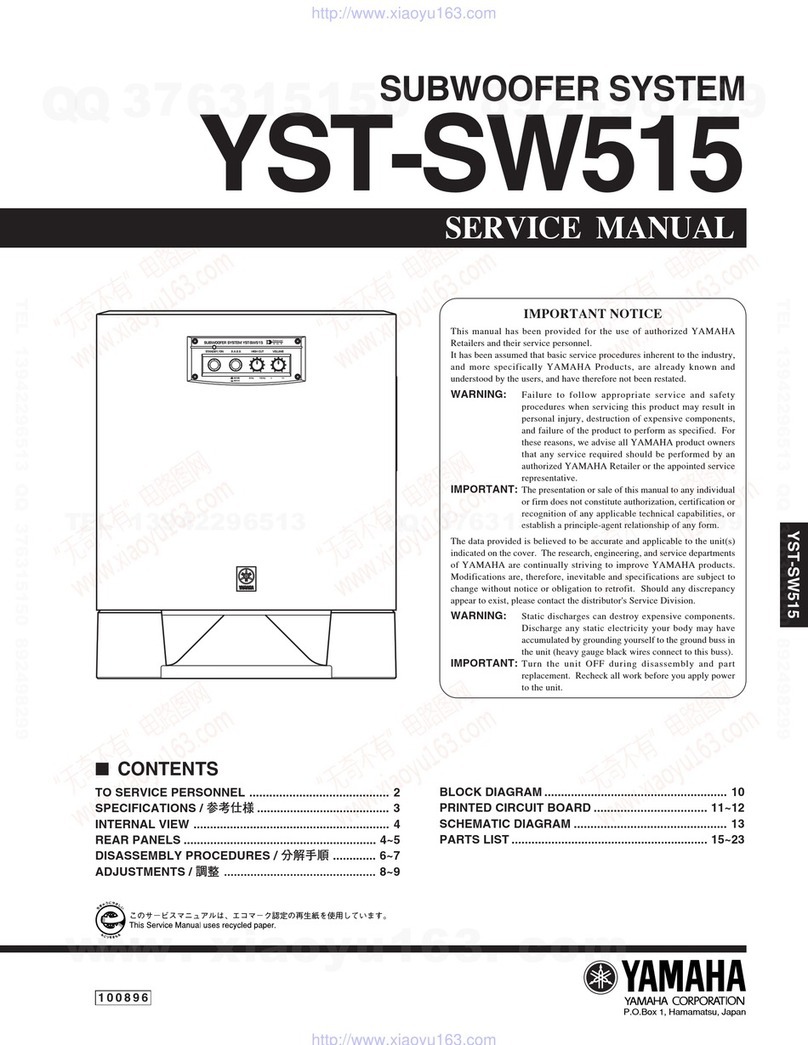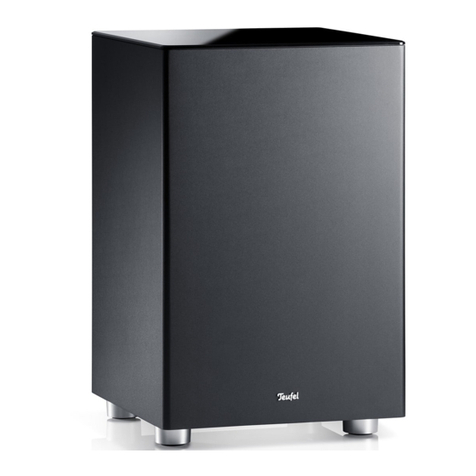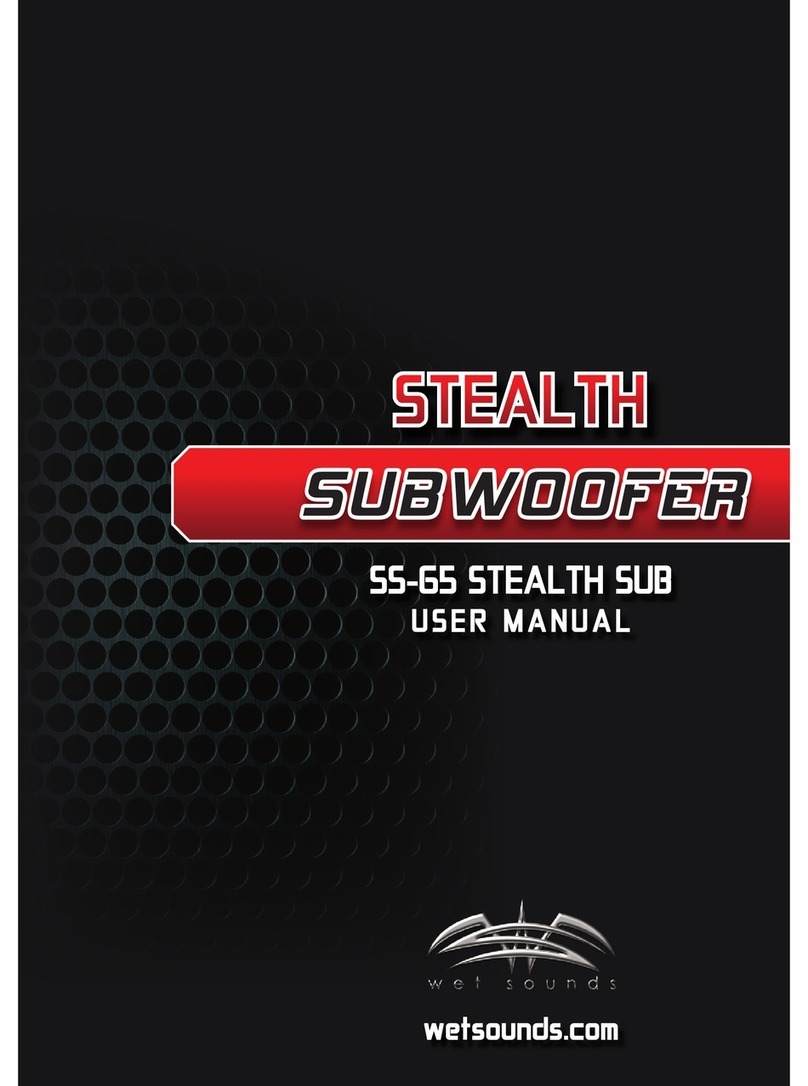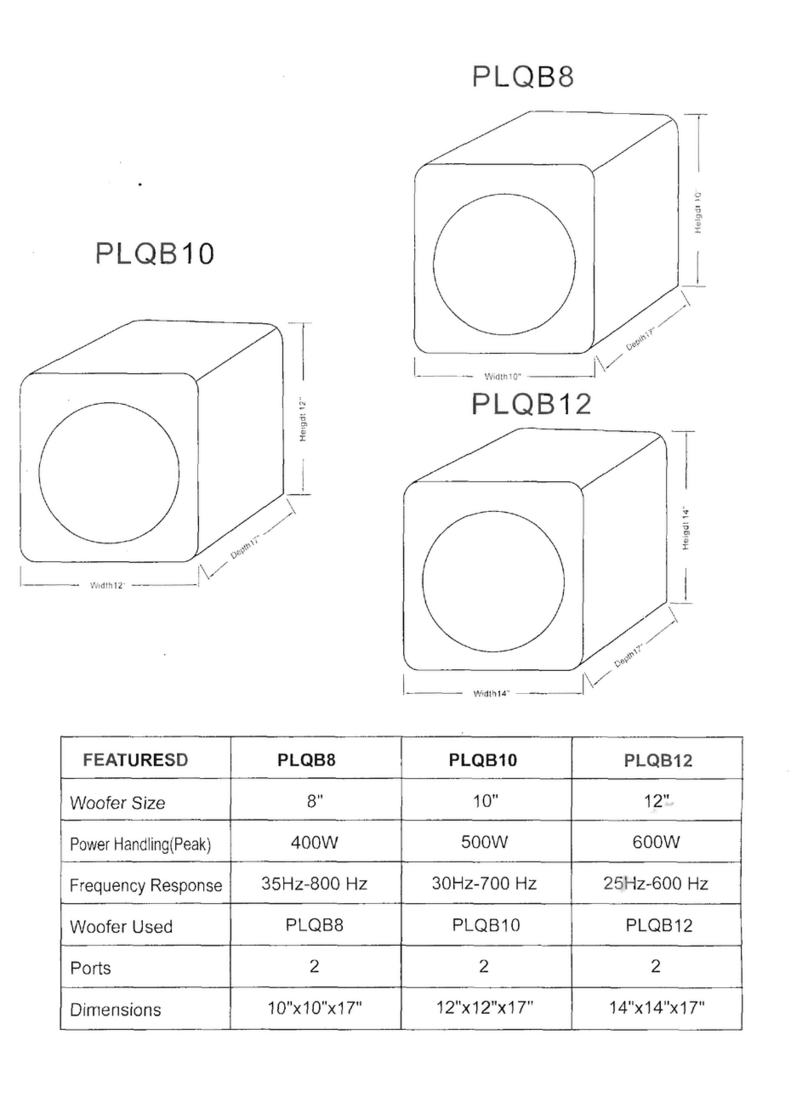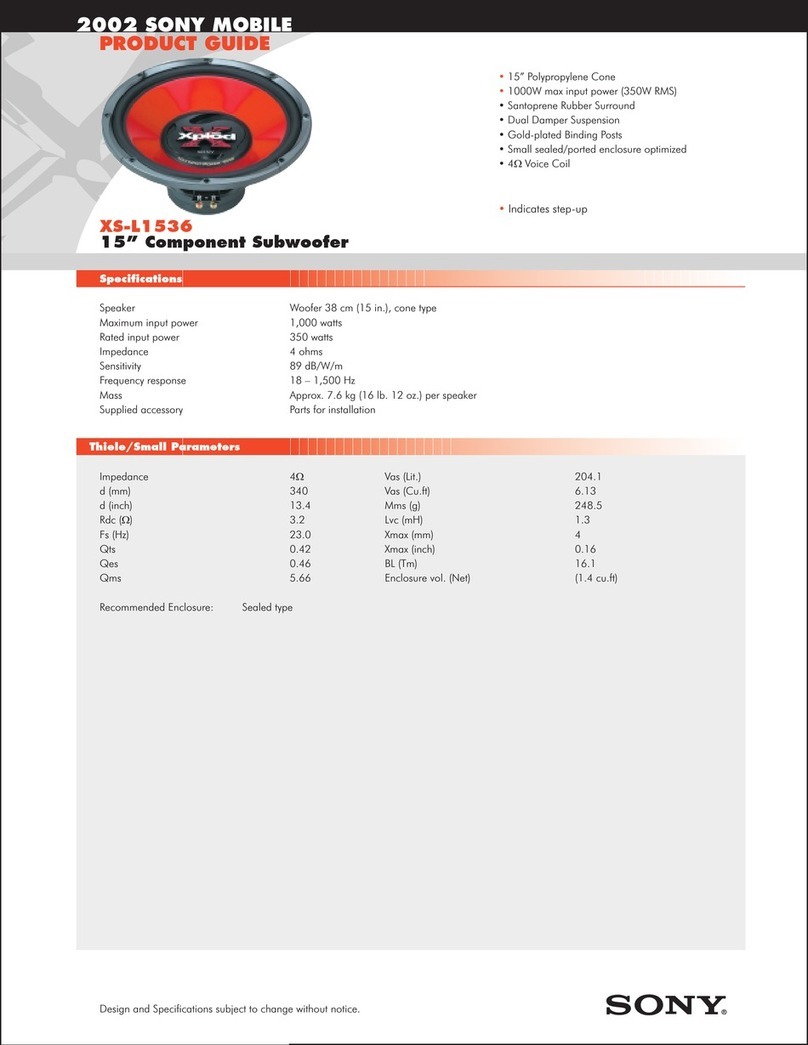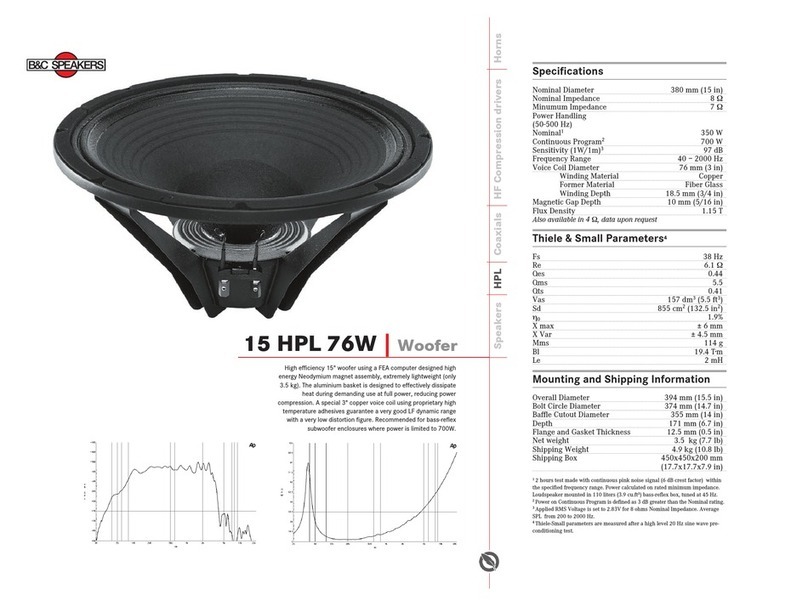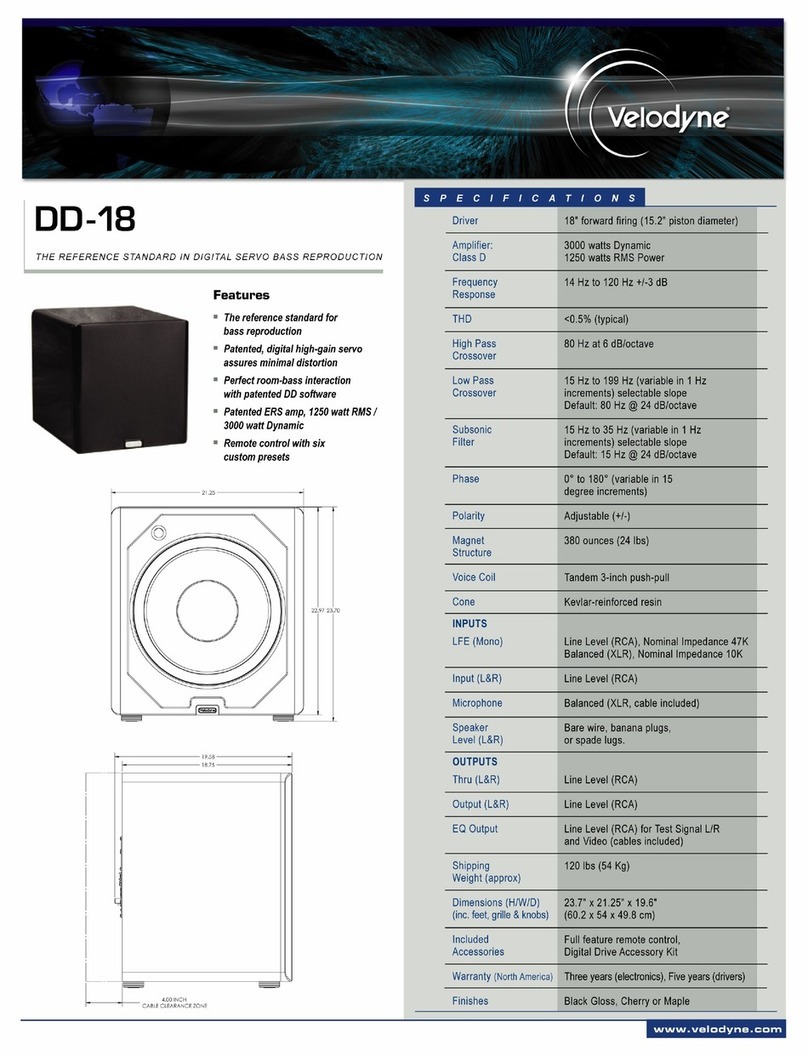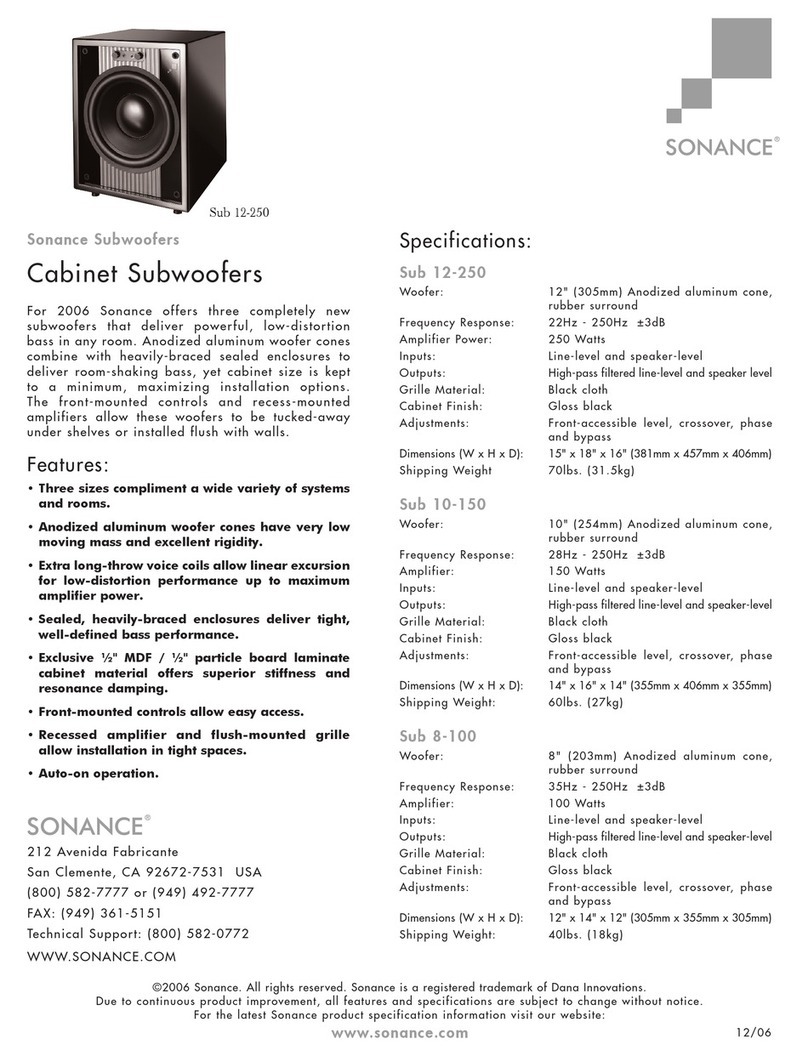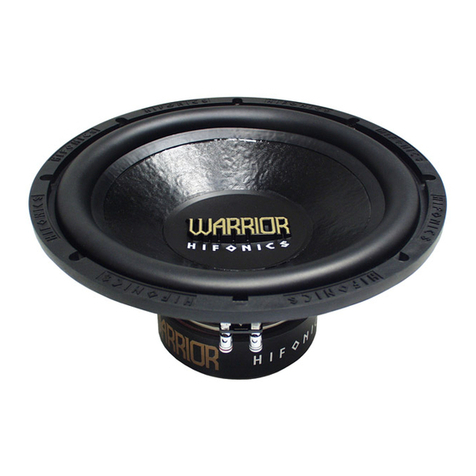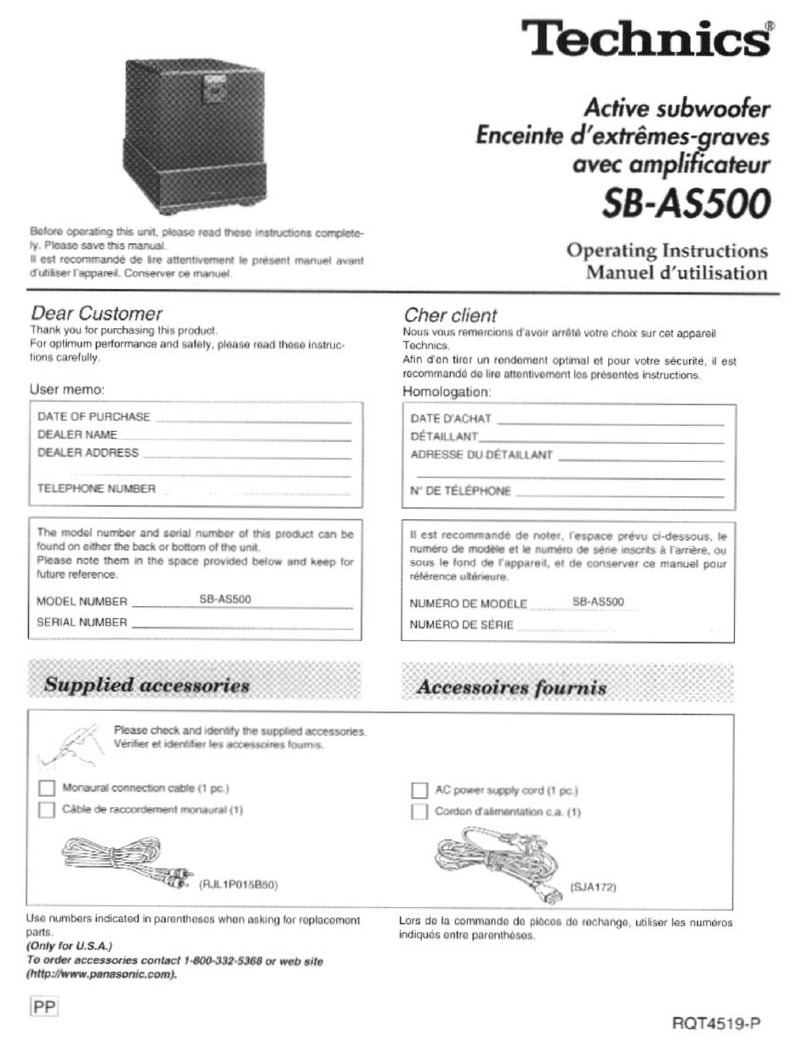
10
The ultimate in dedicated listening room construction involves the design and
construction of oating walls, ceiling and oor. This approach yields the added
benet (when done properly) of providing outstanding acoustic isolation from
adjacent spaces as well as superb bass reproduction. This approach goes well
beyond the scope of an owner’s manual; if you are interested, you should con-
tact a professional acoustician who has specialized in this sort of domestic room
design.
Speaker Placement Within the room itself, placement of the speakers and the listener will have a
profound effect on the performance of the system, particularly below 300 Hz
or so. There is no “perfect” position that will solve all problems, but nding the
best compromise will make it easier to solve the remaining problems with good
room optimization such as in the Wisdom Audio SC-1.
Your Wisdom Audio dealer can help you with optimizing your speaker place-
ment, which is never quite as simple as it seems it should be. The characteristics
you should listen for are several:
Left & Right Speakers Goal #1: Stable, 3-dimensional stereo imaging
This usually requires reasonable symmetry within the room. Mono (correlated)
pink noise can help here, though it does not replace listening to music. With
pink noise playing in both speakers, you should hear a tightly-dened little
“ball” of pink noise oating in space exactly halfway between the speakers.
Goal #2: Smooth, consistent bass
Oft-cited rules of thumb for smoother bass reproduction include both “placing
the speakers at different distances from the side walls vs. the wall behind them,”
and “placing them at ‘odd fractions’ of the room’s dimensions” (e.g., fractions
in which the denominator is an odd number, like 1⁄3, 2⁄5, 2⁄7, etc.). But nothing
replaces your experience in your room, combined with your dealer’s experi-
ence in a variety of rooms. Playing pink noise through the woofer sections of
your Wisdom Audio speakers (with the microphone at the listening position, and
prior to doing any equalization) and watching the results on a Real Time Ana-
lyzer (RTA) will let you see the results of your labors.
Center Channel Center channel height
Once you have a solid stereo image up front (when listening only to the Left and
the Right speakers), you need a center channel speaker for multichannel repro-
duction. It should be centered between the Left and Right, and centered on the
screen’s location, preferably at the same height as the Left and Right speakers.
This presents an obvious problem: you cannot place a speaker in front of your
television screen.
Ideally, a center channel speaker would be behind an acoustically transparent
front projection screen and would match the Left and Right speakers. Doing so
would ensure the best possible consistency of tonal balance, image height, and
dynamic capabilities for the critical center channel. This is how it is done in all
good commercial theaters.
Another possibility that works well in certain instances is to use the “phantom
center channel” feature of your surround processor. This works best when the
room is reasonably symmetrical and the listeners are more-or-less directly in
front of the TV. It uses the natural stereo imaging ability of the speakers to create

